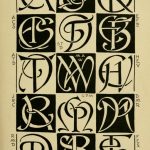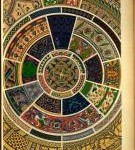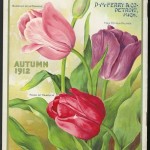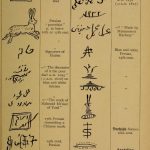 Typography, the aesthetics of language, gets a lot of attention these days. What was once the purview of specialized professionals is now as common as the PC. The digital revolution’s democratizing impact on publishing has also been a boon for the typographer–or at least the typographer’s eye–in the digital sphere. Even if you aren’t labeling your digital choices as “typography,” chances are you are posing questions that typographers ask. How can font help convey meaning? Why is one font preferable to another? Or even, should this be bold and in red?
Typography, the aesthetics of language, gets a lot of attention these days. What was once the purview of specialized professionals is now as common as the PC. The digital revolution’s democratizing impact on publishing has also been a boon for the typographer–or at least the typographer’s eye–in the digital sphere. Even if you aren’t labeling your digital choices as “typography,” chances are you are posing questions that typographers ask. How can font help convey meaning? Why is one font preferable to another? Or even, should this be bold and in red?
Category: Digitization

This post was written by Martin Kalfatovic, Associate Director, Digital Services Division, Smithsonian Institution Libraries.
On October 11-12, Nancy Gwinn, Director of the Smithsonian Institution Libraries, and I participated in the Digital Public Library of America’s (DPLA) Midwest workstream and plenary meetings. The meetings were held in some wonderful meeting spaces at the Harold Washington Library Center of the Chicago Public Library (interesting side note: the building holds the record for largest public library space!).
 It might be a little confusing to keep up with the digital humanities collection that provides the basis for most of these posts. The collection that began as HAC (History, Art, and culture), spent a brief adolescence as SHAC (Smithsonian History, Art, and Culture), has now matured into the CHL (rhymes with BHL!). The Cultural Heritage Library is still available here, and still includes the same content from the history, art, and culture locations; the name changes simply reflect the evolving nature of this arm our digitization practices. Currently at 3,670 items, the CHL features new additions every week.
It might be a little confusing to keep up with the digital humanities collection that provides the basis for most of these posts. The collection that began as HAC (History, Art, and culture), spent a brief adolescence as SHAC (Smithsonian History, Art, and Culture), has now matured into the CHL (rhymes with BHL!). The Cultural Heritage Library is still available here, and still includes the same content from the history, art, and culture locations; the name changes simply reflect the evolving nature of this arm our digitization practices. Currently at 3,670 items, the CHL features new additions every week.

–This post was contributed by Kimberly Lesley, American Art and Portrait Gallery Library intern, summer 2012.
This summer I had the opportunity to work on two projects at the Smithsonian American Art Museum/National Portrait Gallery Library: evaluating titles from the print reference section and selecting public domain titles for digitization. The majority of time was spent on the former, evaluating once heavily relied upon indexes and reference titles against databases and open access online resources. As I paged through volumes of reference titles I was grateful for the vast amounts of information available online with a few keywords and a couple clicks.
 This post was written by Jacqueline Chapman, a summer intern working on the Digital Asset Management System.
This post was written by Jacqueline Chapman, a summer intern working on the Digital Asset Management System.
Being able to say that I work by “The Giant Snake” on the same floor as the Hope Diamond is pretty exciting – but what’s in the office is just as engaging as what surrounds it!
For my internship, I was tasked with developing a workflow for the ingest of image files into the Smithsonian’s relatively new Digital Asset Management System (DAMS). My guide is meant to serve as a model for future SIL old media and legacy data ingest projects. It describes the steps needed to bring previously scanned and photographed items together for retrieval, storage, and preservation. Long-term, the plan is for each Smithsonian digital image to be ‘backed up’ within the DAMS rather than on separate computers, hard drives, CDs, etc. Additionally, the DAMS will serve as a central repository for digital images, searchable across the institution – facilitating inter-departmental image discovery and use in research, exhibitions, projects, and enterprise.
 Over the last century, photography has evolved as much as, if not more than, any technology in wide-spread use. From the first experiments with light and the various chemical compounds used in creating daguerreotypes to Instagram and jpegs, photography has had more costume changes than Madonna. One of my favorite sub-collections in the Smithsonian History Art and Culture (SHAC) digital collection, housed at the Internet Archive, traces the early development, theory, and practice of fine art photography.
Over the last century, photography has evolved as much as, if not more than, any technology in wide-spread use. From the first experiments with light and the various chemical compounds used in creating daguerreotypes to Instagram and jpegs, photography has had more costume changes than Madonna. One of my favorite sub-collections in the Smithsonian History Art and Culture (SHAC) digital collection, housed at the Internet Archive, traces the early development, theory, and practice of fine art photography.
 As you may already know, in addition to viewing pages from the online “flippy book”, or BookReader, the Internet Archive (our digitization partner and the SHAC collection’s current point of access) provides versions of digitized items in a variety of file formats so that the general public can download items for use offline or on mobile devices. And while we don’t actively retain granular usage statistics from IA, we get some idea of a title’s general popularity via the download numbers displayed on each item. So, while stopping short of providing objective data about the use of SHAC materials, these stats provide a glimpse into the active lives of the digitized collection. Without further ado, I present the 5 most popular titles from the Smithsonian History, Art, and Culture digital collection:
As you may already know, in addition to viewing pages from the online “flippy book”, or BookReader, the Internet Archive (our digitization partner and the SHAC collection’s current point of access) provides versions of digitized items in a variety of file formats so that the general public can download items for use offline or on mobile devices. And while we don’t actively retain granular usage statistics from IA, we get some idea of a title’s general popularity via the download numbers displayed on each item. So, while stopping short of providing objective data about the use of SHAC materials, these stats provide a glimpse into the active lives of the digitized collection. Without further ado, I present the 5 most popular titles from the Smithsonian History, Art, and Culture digital collection:
